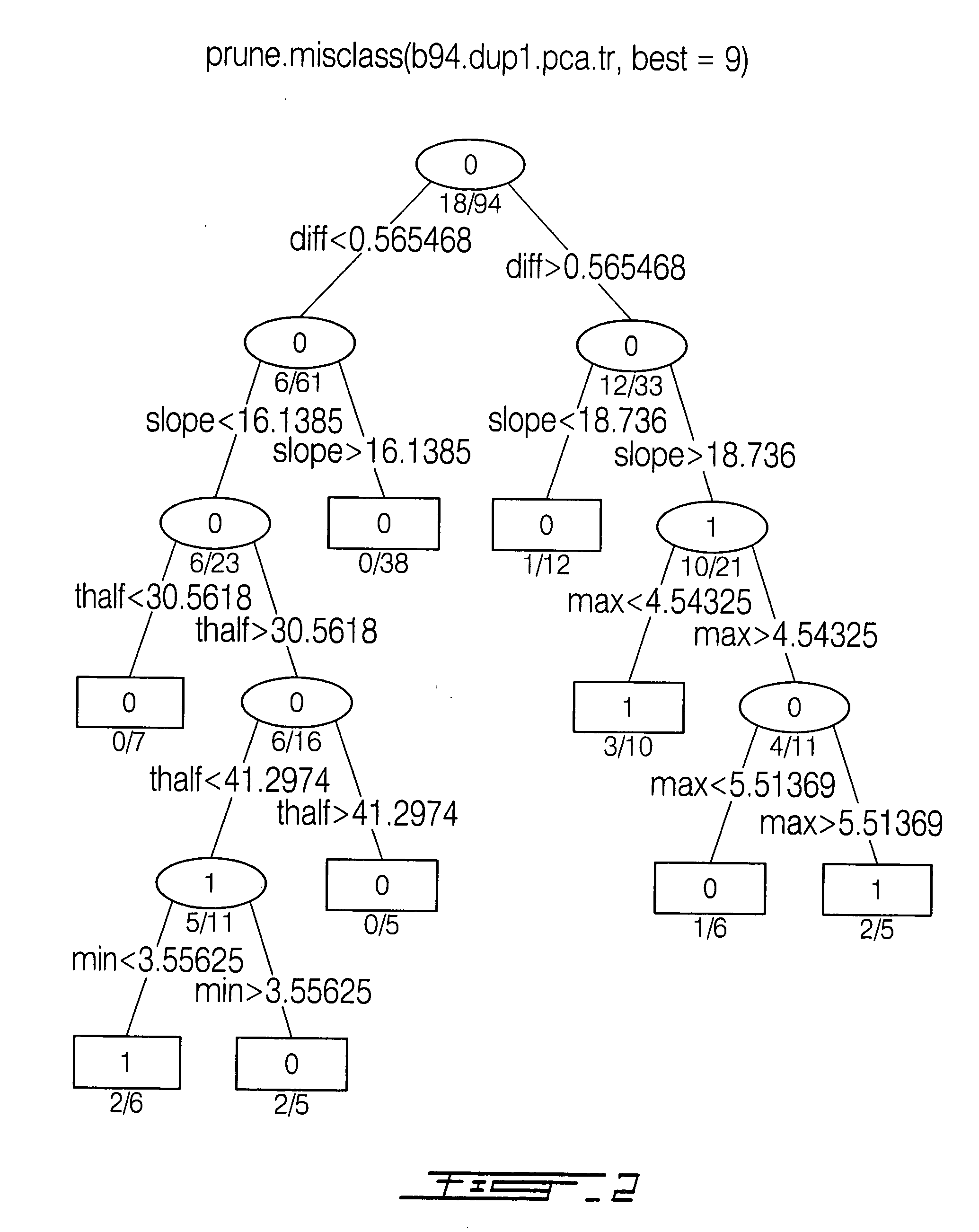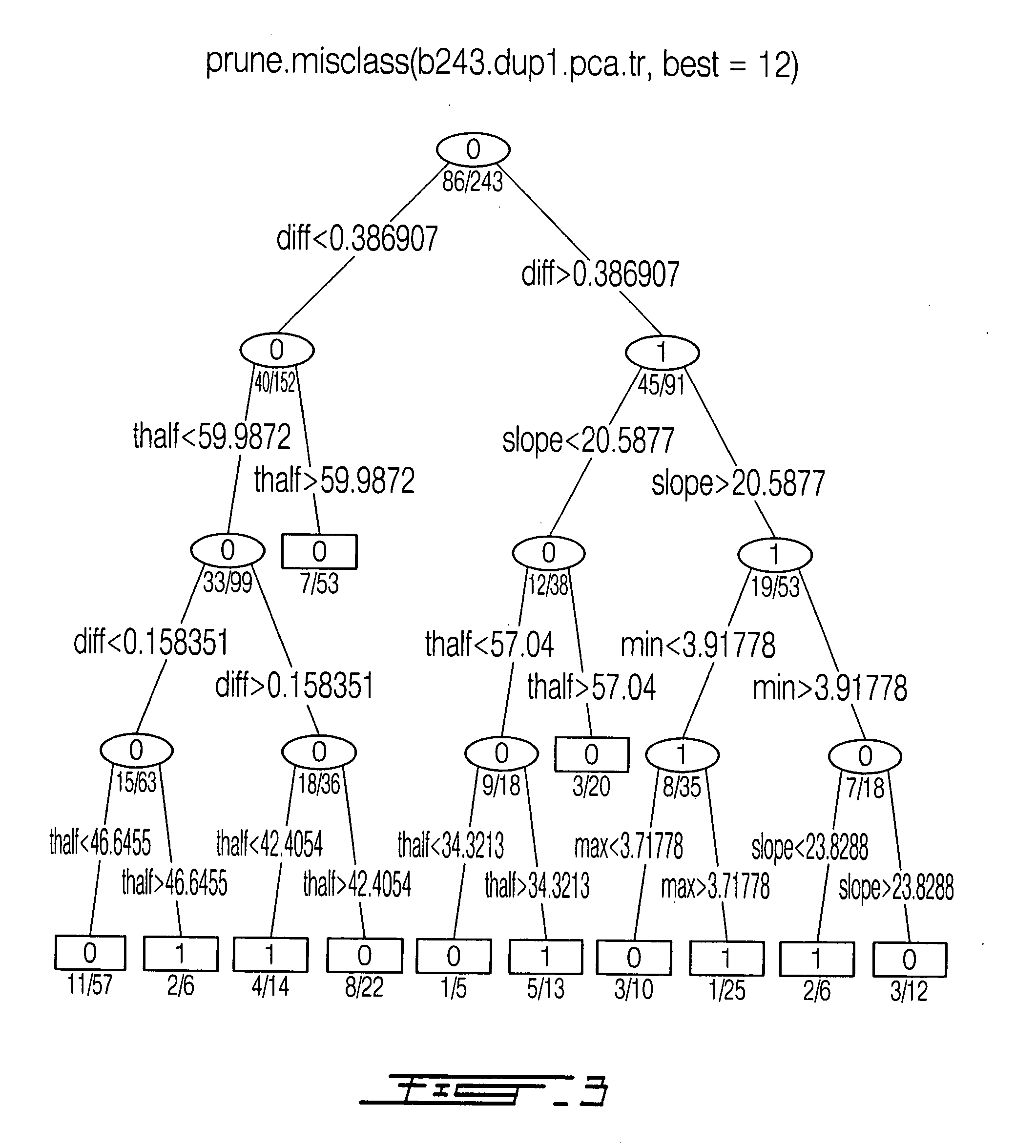Method to detect prostate cancer in a sample
a prostate cancer and sample technology, applied in the field of prostate cancer, can solve the problems of only 79% of tpsa levels, unpredictability of prostate cancer screening psa, leakage of psa into blood, etc., and achieve the effect of facilitating the separation of bound target sequences
- Summary
- Abstract
- Description
- Claims
- Application Information
AI Technical Summary
Benefits of technology
Problems solved by technology
Method used
Image
Examples
example 1
CLINICAL PERFORMANCE USING ONE ILLUSTRATIVE EMBODIMENT OF THE METHODS OF THE PRESENT INVENTION
[0142] To estimate the clinical performance of the method, a pilot study was done on 517 patients planned to undergo ultrasound guided needle biopsies coming from five university medical centers located in Montreal and Quebec (Canada) between September 2001 and June 2002. Each sample was processed using the following steps:
[0143] Following an attentive digital rectal examination, the first 20 to 30 ml of voided urine was collected in sterile 80 ml plastic containers (patient urinates directly in the sterile container).
[0144] An equal volume of Sample buffer (0.1M phosphate (0.06M Na2HPO4, 0.04M NaH2PO4) 0.3M NaCl, pH 7.0,) was immediately added and the solution mixed by inversion.
[0145] If not processed immediately, samples were refrigerated between 2-8° C. for up to three days until further processing. In view of the cell recovery step, freezing should be avoided.
C...
PUM
| Property | Measurement | Unit |
|---|---|---|
| Time | aaaaa | aaaaa |
| Fluorescence | aaaaa | aaaaa |
Abstract
Description
Claims
Application Information
 Login to View More
Login to View More - R&D
- Intellectual Property
- Life Sciences
- Materials
- Tech Scout
- Unparalleled Data Quality
- Higher Quality Content
- 60% Fewer Hallucinations
Browse by: Latest US Patents, China's latest patents, Technical Efficacy Thesaurus, Application Domain, Technology Topic, Popular Technical Reports.
© 2025 PatSnap. All rights reserved.Legal|Privacy policy|Modern Slavery Act Transparency Statement|Sitemap|About US| Contact US: help@patsnap.com



